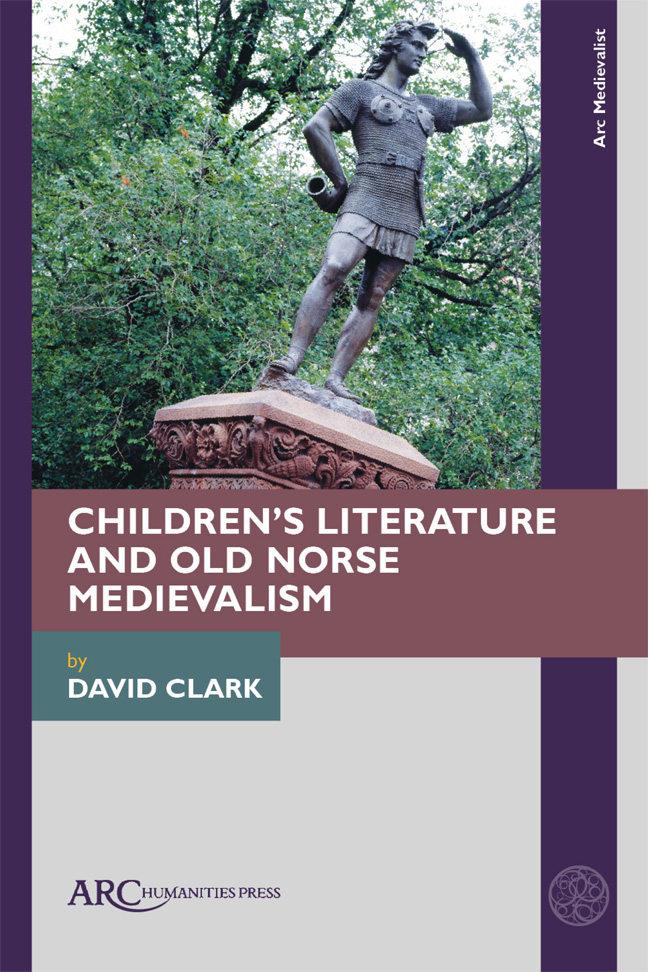Book contents
- Frontmatter
- Contents
- Acknowledgements
- Dedication
- Introduction: The End
- 1 Age-Related Categories
- 2 Generic Categories
- 3 Transformational Fantasy
- 4 Horned Helmets and Comic Anachronism
- 5 Viking Reputation
- 6 Runes and Magic
- 7 The Power of Story
- 8 Race and Ethnicity
- 9 Heroism
- 10 Viking Masculinity
- 11 Viking Femininity
- 12 Viking Sex and Gender
- 13 Bowdlerization
- 14 Sexuality
- 15 Ecological Threat
- 16 Norse Medievalism in Alan Early's Father of Lies Trilogy
- 17 Avoiding the End of Days: K. L. Armstrong and M. A. Marr's Blackwell Pages
- 18 Rick Riordan's Magnus Chase Series and Norse Medievalism
- Conclusion
- Select Bibliography of Frequently Cited Works
- Index
12 - Viking Sex and Gender
Published online by Cambridge University Press: 17 February 2024
- Frontmatter
- Contents
- Acknowledgements
- Dedication
- Introduction: The End
- 1 Age-Related Categories
- 2 Generic Categories
- 3 Transformational Fantasy
- 4 Horned Helmets and Comic Anachronism
- 5 Viking Reputation
- 6 Runes and Magic
- 7 The Power of Story
- 8 Race and Ethnicity
- 9 Heroism
- 10 Viking Masculinity
- 11 Viking Femininity
- 12 Viking Sex and Gender
- 13 Bowdlerization
- 14 Sexuality
- 15 Ecological Threat
- 16 Norse Medievalism in Alan Early's Father of Lies Trilogy
- 17 Avoiding the End of Days: K. L. Armstrong and M. A. Marr's Blackwell Pages
- 18 Rick Riordan's Magnus Chase Series and Norse Medievalism
- Conclusion
- Select Bibliography of Frequently Cited Works
- Index
Summary
AS WE’VE SEEN, the shieldmaiden figure is a recurrent motif in Old Norse culture, and Norse understandings of gender seem to have been relatively fluid within certain parameters. Biological sex may seem oppositional at times: saga men and women blame each other when things go wrong, and figures like Odin in Havamal speak and act in misogynistic ways. Nonetheless, it too is not always seen as determinative—not just in mythological accounts of Loki's shape-shifting practices (including his pregnancy with Odin's horse Sleipnir), but also in more naturalistic saga narratives such as the account in chapter 23 of the Saga of the Men of Floi of Thorgils successfully breast-feeding a starving child.
Contemporary medievalist novels adopt a range of different perspectives on gender. Almost all, however, see biological sex as a given, to which gender is often closely bound. Most recent accounts of sex and gender recognize that gender is not binary—that acts or attributes are coded differently in different cultures and time-periods and not con-sistently as masculine or feminine. The nature of biological sex and its relationship to cultural gender, however, is a contested question, particularly as trans identities have become a hotly politicized issue in the public arena. In the most basic terms it involves disagreement over whether sex (unlike gender) is binary. Though, unlike many popular commentators, scientists may recognize that sex is more complicated than the XX/XY binary children are taught in biology lessons, for instance, they do not agree either on the significance of chromosomal variants (such as XXY and XYY), or on how to describe and deal with intersex or trans identities.
It's not possible to summarize this complex issue adequately here. But it is possible to recognize the undeniable harm done to trans people by certain kinds of medicaliza-tion and victimization in the wider community, along with the objections of many inter-sex individuals to non-consensual medical practices which surgically assign a sex soon after birth and to pathologizing descriptions as genetically “disordered.” This is not an academic debate—rather it is an ideological one in which the least numerous and least powerful usually suffer. Although fuller analysis of that context is outside the scope of this book, it is important to bear it in mind as this chapter considers the interaction of sex and gender in contemporary medievalist texts.
- Type
- Chapter
- Information
- Children's Literature and Old Norse Medievalism , pp. 103 - 110Publisher: Amsterdam University PressPrint publication year: 2023



